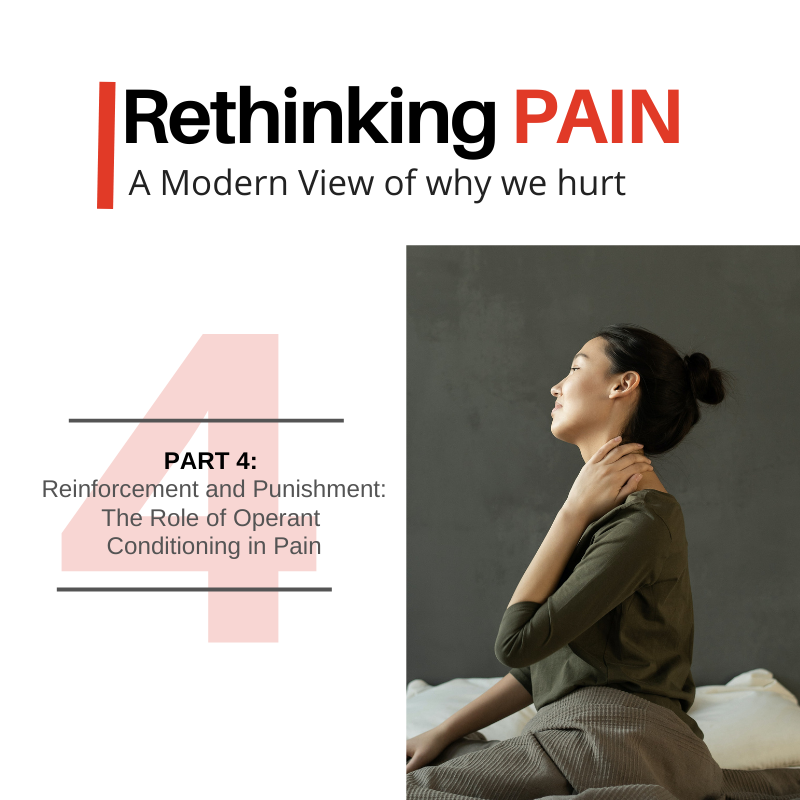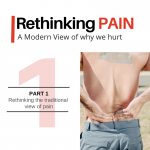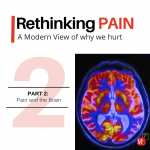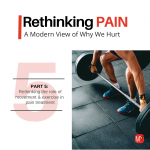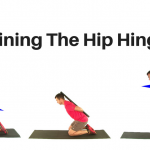Part 4: The role of operant conditioning and pain
We’ve been talking about pain. In Part 3 of this article series we introduced the the idea that the brain can “learn to hurt”. Through Classical Conditioning the brain has the potential to create fear-avoidance beliefs and behaviors. But before we leave this topic we also need to also look at how these fears and phobias may be reinforced and maintained over time. In some cases long after they provide any purpose or benefit to the patient. For this we need to review the work of yet another prominent psychologist, B.F. Skinner.
According to Skinner, behavior is a function of its consequences. In other words, behaviors are more likely to occur when followed by pleasant outcomes (positive reinforcement) or by the removal of unpleasant ones (negative reinforcement).
The inverse is also true. Behaviors are less likely to occur when they are followed by unpleasant and undesirable outcomes (positive punishment) or when positive results fail to occur (negative punishment).
In even simpler terms, reinforcement of behaviors leads to their maintenance. Punishment or nonreinforcement of behaviors leads to their extinction. Of course these principles are easily understood. We see them in practice when training the family dog or putting a gold sticker next to our kids name on the chore chart. But what is less obvious is how reinforcement and punishment relates to pain.
Operant Conditioning and Pain
Think of the individual who experiences an episode of acute low back pain after lifting or bending. Such an episode will result in bending being painful. This pain is a form of positive punishment. According to Skinner, this reduces the likelihood of the behavior being repeated.
Alternatively, not bending avoids the pain. In operant speak, this is negative reinforcement. The removal of an undesirable outcome. Again, according to Skinner, this reinforces the behavior and increases the likelihood of reoccurrence. (In this case the behavior is to stay tall and upright instead of bending).
But there’s a critical point to make here before moving on from this section to the stuff that’s actually important. (Like how all this rambling on about the brain and our ancient ancestors matter. And how these boring theories from long-gone psychologists that you thought you would never have to hear about again after you passed your first year psychology class changes how we treat patients in pain.) It’s the reason that we needed to include the seminal work of Burrhus Frederic Skinner here in the first place.
Reinforcement comes in many forms
When it comes to reinforcement, it’s not just personal experience that matters. What a person observes or is told by others is another powerful player. Especially when this involves figures of authority or those held in high regard.
So the pain a patient feels with one activity (or the lack of pain with another) is a form of reinforcement. But so is the message delivered by a clinician or therapist. A doctor telling their patient that flexing their lower back when bending or lifting can be harmful to their spine and damage their discs can also serve to reinforce unhelpful or maladaptive pain behaviors.
Here’s the point…
When treating patients, it is not just about specific treatment techniques or which stretches or exercises we prescribe. It’s also about creating a dialogue with patients about the source and meaning of their pain. Here we can see the power of educating patients on the modern understanding of pain. About how chronic and recurrent pain is more about tissue sensitivity and an overactive pain system as opposed to tissue damage. And that imaging findings like building discs and arthritic joints don’t have to mean that there is no hope.
But be careful. Not all patients fear and avoid movement
The fear-avoidance model has had a significant impact on treating patients in pain. Encouraging patients to be more active and get back to activities despite their pain is often a critical component of care in these cases.
But before moving forward a word of caution is needed here. Not all pain patients will hold these fear-avoidance beliefs. It is also common to see patients who continue pushing through offending tasks and activities despite ongoing or worsening pain. This seems particularly common when certain tasks are closely tied to a person’s identity or self-worth, or if the activity is a significant source of joy or well-being. Athletes and musicians come to mind here.
In fact, these endurance-related pain responses have been shown to occur as often or even more frequently as fear-avoidance responses (1,2). And as unhealthy and maladaptive as fear-avoidance responses can be, these endurance-related pain responses can also be detrimental to health and recovery.
So pain education needs to be tailored to the unique needs and beliefs of each individual. Messaging to help patients understand that hurt does not always equate to harm, along with encouragement to increase exposure to feared or sensitive movements may be helpful to patients exhibiting fear-avoidance beliefs. But this advice is less suitable with endurance copers. These patients may do better with a temporary activity reduction then building back to desired activity levels. More on this in the next article.
References
- Hasenbring MI, Verbunt JA. Fear avoidance and endurance-related responses to pain: New models of behavior and their consequences for clinical practice. Clin J Pain. 2010; 26(9).
- Smeets RJ et al. The association of physical deconditioning and chronic low back pain: A hypothesis-oriented systematic review. Disabil Rehabil. 2006; 28(11).

